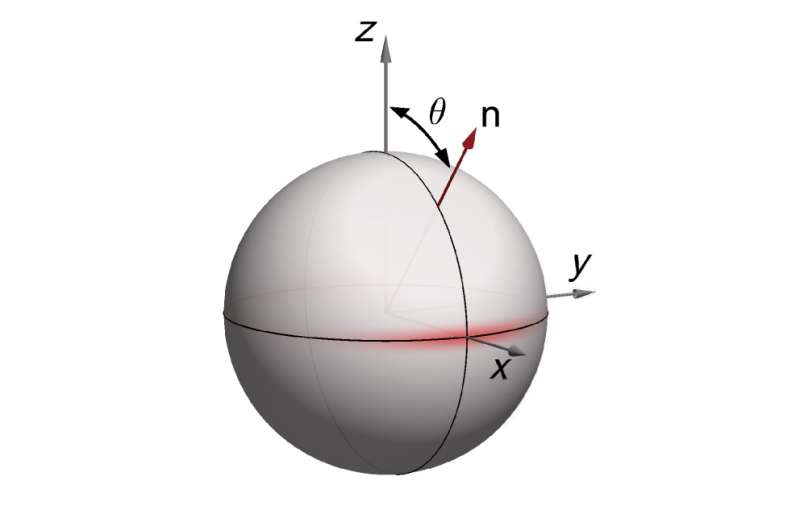April 17, 2017 feature
Bell correlations measured in half a million atoms

(Phys.org)—Physicists have demonstrated Bell correlations in the largest physical system to date—an ensemble of half a million atoms at an ultracold temperature of 25 µK. The presence of Bell correlations indicates that all of the atoms share nonlocal quantum correlations with each other. These correlations could one day be used in quantum information systems and to design new tests of quantum mechanics.
The researchers, led by Mark Kasevich at Stanford University, have published a paper on the large system exhibiting Bell-type quantum correlations in a recent issue of Physical Review Letters.
"Our results illustrate the richness of quantum many-body states involving many entangled systems," Kasevich told Phys.org. "Little is known at this frontier."
In order to use quantum correlations for practical purposes, the correlations must be measured. Until recently, the only way to measure Bell correlations in a system of atoms (or other components) was to measure the correlations between all of the individual atoms. But a few years ago, physicists developed a new method of measuring Bell correlations that does not require measuring individual components, but can be done by measuring the collective properties of the system as a whole. Last year, scientists used this method to demonstrate Bell correlations in a Bose-Einstein condensate of around 500 atoms.
In the new study, the researchers have increased this number to a record 500,000 atoms. To do this, they used a method called spin squeezing, in which they started by preparing all of the atoms' spins in a superposition of up and down states. The researchers then reduced (or "squeezed") the uncertainty of one spin component below the value allowed for uncorrelated atoms, which simultaneously increases the uncertainty of the conjugate spin component to satisfy the uncertainty principle. By making collective measurements on the spin properties of the entire system, the researchers demonstrated that the spin states exhibit correlations beyond what is expected by classical physics.
Currently, it's unclear exactly how nonlocal Bell correlations may be used in such large systems. In smaller systems, Bell correlations have been used to generate random numbers, which have applications in cryptography. The physicists also expect that the experimental methods used here could be used to test the predictions of quantum theory.
"We hope to test quantum mechanics in news ways with spatially extended versions of the states used in this work," Kasevich said. "Imagine a quantum many-body state extending over one meter involving thousands of correlated particles. The squeezed states used for this work also have practical application in sensors, as they can be exploited to reduce sensor noise."
More information: Nils J. Engelsen, Rajiv Krishnakumar, Onur Hosten, and Mark A. Kasevich. "Bell Correlations in Spin-Squeezed States of 500 000 Atoms." Physical Review Letters. DOI: 10.1103/PhysRevLett.118.140401
Journal information: Physical Review Letters
© 2017 Phys.org


















